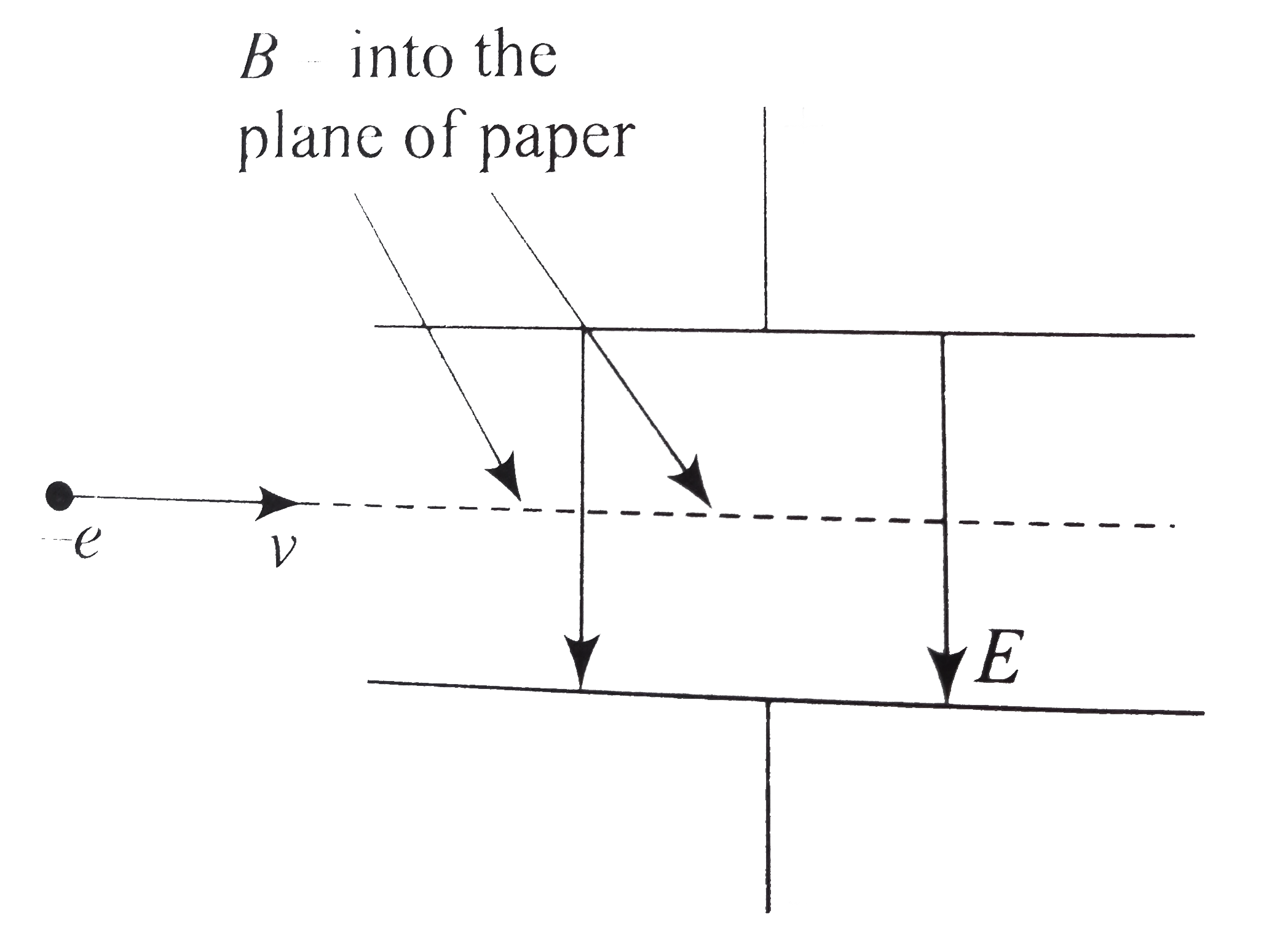A beam of well collimated cathode rays travelling with a speed of 5×10−6ms−1 enters a region of mutually perpendicular electric and magnetic fields and emerge undeviated from the region if ∣∣→B∣∣=0.02T. The magnitude of the electric field is
105Vm−1
2.5×108Vm−1
1.25×1010Vm−1
2×103Vm−1
The correct Answer is:A
E=vB=(5×106)×(0.02)=1×105Vm−1
Topper's Solved these Questions
- BOOK - U-LIKE SERIESCHAPTER - MOVING CHARGES AND MAGNETISM EXERCISE - FILL IN THE BLANKS12videos
MOVING CHARGES AND MAGNETISM
- BOOK - U-LIKE SERIESCHAPTER - MOVING CHARGES AND MAGNETISM EXERCISE - TRUE OR FALSE5videos
MOVING CHARGES AND MAGNETISM
- BOOK - U-LIKE SERIESCHAPTER - MOVING CHARGES AND MAGNETISM EXERCISE - CASE BASED/SOURCE-BASED INTEGRATED QUESTIONS18videos
MOVING CHARGES AND MAGNETISM
- BOOK - U-LIKE SERIESCHAPTER - MODEL TEST PAPER 3 (UNSOLVED)EXERCISE - SECTION A3videos
MODEL TEST PAPER 3 (UNSOLVED)
- BOOK - U-LIKE SERIESCHAPTER - NUCLEIEXERCISE - Self Assessment Test10videos
NUCLEI
Similar Questions
A charged particle with a velocity 2×103ms−1 passes undeflected through electric field and magnetic fields in mutually perpendicular directions. The magnetic field is 1.5 T. the magnitude of electric field will be
View SolutionA beam of proton passes undeflected with a horizontal velocity v, through a region of electric and magnetic fields, mutually perpendicular to each other and perpendicular to the direction of the beam. If the magnitudes of the electric and magnetic fields are 100kV/m, 50mT respectively, calculate the velocity of the beam v.
View Solution
Knowledge Check
- Question 1 - Select One
A beam of well collimated cathode rays travelling with a speed of 5×106ms−1 enter a region of mutually perpendicular electric and magnetic fields and emerge undeviated from this region. If |B|=0.02t, the magnitude of the electric field is
A105Vm−1B2.5×108Vm−1C1.25×1010Vm−1D2×103Vm−1 - Question 2 - Select One
A charged particle with a velocity 2×103ms−1 passes undeflected through electric field and magnetic fields in mutually perpendicular directions. The magnetic field is 1.5 t. the magnitude of electric field will be
A1.5×103NC−1B2×103NC−1C3×103NC−1D1.33×103NC−1 - Question 3 - Select One

Electrons taveling at a velocity of 2.4×106ms−1 enter a region of crossed electric and magnetic fields as shoen in Fig. If the electric field is 3.0×106 Vm and the flux density of the magnetic field is 1.5 T, the electrons upon entering the region of the crossed fields willAcontinue to travel undeflected in their original derection.Bbe deflected upward in the plane of the diagramCbe deflected upward on the plane of the diagramDnone of the above

Electrons taveling at a velocity of 2.4×106ms−1 enter a region of crossed electric and magnetic fields as shoen in Fig. If the electric field is 3.0×106 Vm and the flux density of the magnetic field is 1.5 T, the electrons upon entering the region of the crossed fields willView SolutionIn an experiment to determine e/m using Thomson's method, electrons from the cathode accelerate through a potential difference of 1.5 kV. The collimated beam of electrons is made to enter a region of crossed electric and magnetic fields, both perpendicular to beam direction. Two parallel plates 2.0 cm apart held at a potential difference of 400 V provide the electric field. while a magnetic field of 8.6×10−4T is produced by Helmholtz coils arrangement. The beam hits the fluorescent screen at the end of the tube undeflected. Determine the charge to mass ratio of electron.
View SolutionA proton moves with a speed of 5.0×106ms−1 along the x -axis.It enters a region where there is a magnetic field of magnitude 2.0 tesla directed at an angle of 30∘ to the x -axis and lying in the xy plane.The magnitude of the magnetic force on the proton is
View SolutionAn electron enters a region where magnetic field (B) and electric field (E ) are mutually perpendicular, then
View SolutionA beam of electrons is moving with constant velocity in a region having simultaneous perpendicular electric and magnetic fields of strength 20Vm−1 and 0.5 T, respectively at right angles to the direction of motion of the electrons. Then, the velocity of electrons must be
View Solution

